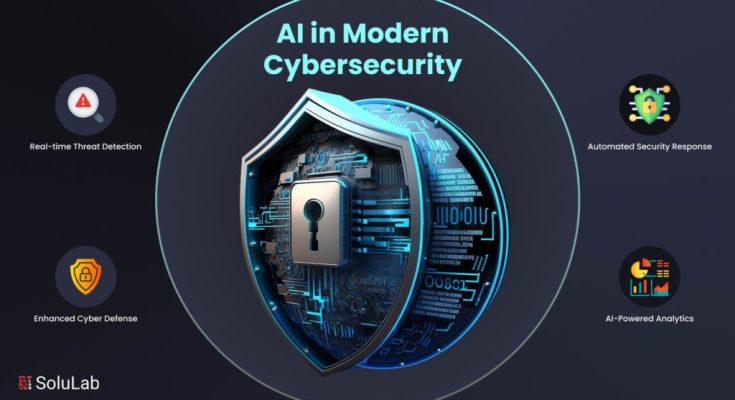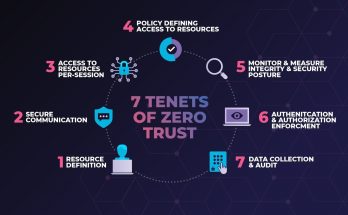Artificial intelligence is rapidly becoming a cornerstone of modern cybersecurity strategy, offering a level of speed, precision, and adaptability that traditional methods struggle to match. As cyber threats grow more sophisticated and frequent, organizations are turning to AI not just as a tool, but as a tactical partner in defending digital assets. The shift is not merely technological—it’s strategic. AI is changing how threats are detected, how responses are coordinated, and how systems learn from past incidents to become more resilient over time.
One of the most transformative aspects of AI in cybersecurity is its ability to detect anomalies in real time. Traditional security systems rely heavily on predefined rules and signatures, which can be effective against known threats but often fall short when facing novel or evolving attacks. AI, particularly through machine learning, excels at identifying patterns and deviations that may signal malicious activity. For example, if a user typically logs in from Bangkok during business hours but suddenly accesses sensitive files from an unfamiliar location at midnight, an AI system can flag this behavior instantly. It doesn’t need to know the specific threat—it recognizes that something is off and prompts further investigation.
This proactive detection is especially valuable in combating zero-day exploits and advanced persistent threats, which are designed to bypass conventional defenses. AI systems can analyze vast amounts of data from network traffic, user behavior, and endpoint activity to uncover subtle indicators of compromise. By continuously learning from new data, these systems refine their models and improve their accuracy over time. The result is a dynamic defense posture that evolves alongside the threat landscape, rather than lagging behind it.
AI also enhances incident response by automating routine tasks and accelerating decision-making. When a breach occurs, time is critical. Manual processes can delay containment and remediation, allowing attackers to deepen their foothold. AI-driven systems can triage alerts, prioritize threats based on severity, and even initiate containment protocols without human intervention. For instance, if ransomware is detected on a device, an AI system might isolate the device from the network, block further file encryption, and notify the security team—all within seconds. This kind of speed can mean the difference between a minor disruption and a major crisis.
Beyond detection and response, AI contributes to predictive analytics, helping organizations anticipate and prepare for future threats. By analyzing historical data and identifying trends, AI can forecast which types of attacks are likely to target specific industries or systems. This insight allows security teams to allocate resources more effectively, strengthen vulnerable areas, and develop contingency plans. In sectors like finance or healthcare, where data sensitivity is paramount, predictive capabilities are not just helpful—they’re essential.
AI is also playing a growing role in threat intelligence. Gathering and analyzing data from diverse sources—such as dark web forums, malware repositories, and global attack reports—can be overwhelming for human analysts. AI can sift through this information, extract relevant insights, and correlate them with internal data to provide a clearer picture of emerging threats. This fusion of external and internal intelligence enables organizations to stay ahead of attackers and adapt their defenses accordingly. It’s not just about reacting to threats—it’s about anticipating them and shaping the battlefield.
However, the integration of AI into cybersecurity is not without challenges. One concern is the potential for false positives, which can overwhelm security teams and lead to alert fatigue. While AI systems are improving in accuracy, they still require oversight and fine-tuning to ensure that alerts are meaningful and actionable. Another issue is the risk of adversarial attacks, where malicious actors attempt to manipulate AI models by feeding them deceptive data. Defending against such tactics requires robust training methods, continuous validation, and a layered security approach that combines AI with human expertise.
Ethical considerations also come into play. AI systems often rely on extensive data collection, raising questions about privacy and consent. Organizations must balance the need for comprehensive monitoring with respect for user rights and regulatory compliance. Transparency in how AI decisions are made and accountability for those decisions are critical to maintaining trust. As AI becomes more embedded in cybersecurity operations, governance frameworks must evolve to address these concerns and ensure responsible use.
Despite these challenges, the benefits of AI in cybersecurity are compelling. It offers a level of agility and intelligence that is increasingly necessary in a world where threats are fast-moving and complex. By augmenting human capabilities, AI enables security teams to focus on strategic tasks, make better decisions, and respond more effectively to incidents. It’s not about replacing humans—it’s about empowering them with tools that enhance their reach and impact.
The future of cybersecurity will likely be shaped by deeper integration between AI and other emerging technologies. As quantum computing, edge devices, and decentralized networks become more prevalent, the need for adaptive, intelligent security solutions will only grow. AI will be central to this evolution, serving as both a shield and a guide in navigating the digital frontier. For businesses, embracing AI in cybersecurity is not just a technical upgrade—it’s a strategic imperative. It’s about building systems that are not only secure but smart enough to stay that way.



